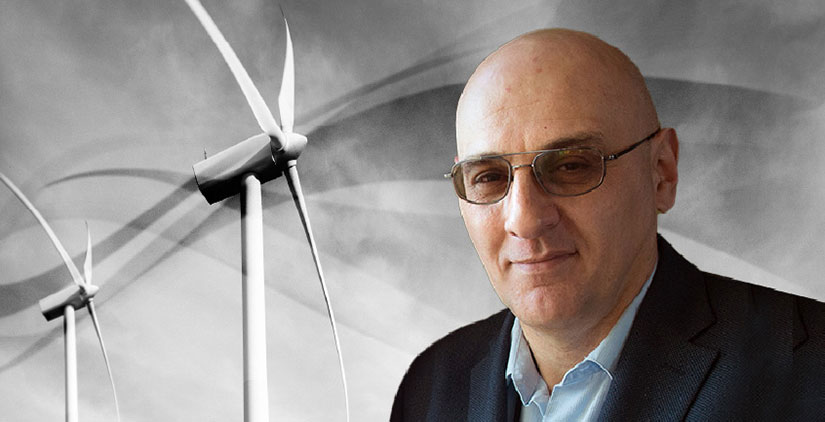Sign up for daily news updates from CleanTechnica on email. Or follow us on Google News!
Q&A With Vahan Gevorgian, Senior Research Fellow and Chief Engineer at NREL

Twenty-nine years ago, Vahan Gevorgian was a postdoctoral researcher studying wind and hybrid energy systems at the State Engineering University of Armenia when a once-in-a-lifetime opportunity presented itself.
Ken Touryan, a National Renewable Energy Laboratory (NREL) researcher who was supporting the Armenian energy sector, connected Gevorgian with Larry Flowers. Flowers was an NREL researcher visiting Armenia for NREL’s Village Power Project, which focused on electrifying rural locations with renewable energy. The two met up at the university, and Flowers invited Gevorgian to join his team at NREL—halfway around the world in Colorado.
But Gevorgian did not let the great distance discourage him.
“Even then, NREL was one of the top research institutions for renewable energy, so it didn’t matter how far I had to travel,” Gevorgian said. “I would have gone to the dark side of the moon for it.”
Twenty-nine years later, Gevorgian is still at NREL, now a senior research fellow and chief engineer in the laboratory’s Power Systems Engineering Center. He contributes to many different projects, but his work mainly focuses on integrating renewable energy sources, like wind, solar, and hydropower, into the electric grid.
We caught up with Gevorgian to learn more about his background, his work at NREL, and his advice for early-career wind energy researchers.
What drew you to work in wind energy?
Wind energy struck me as a very promising renewable energy technology, so I studied controller aspects of wind turbine operation as part of my Ph.D. Then, when I accepted the job on Larry Flowers’ team, which was based at the National Wind Technology Center at the Flatirons Campus, I got involved in all kinds of wind-energy-related work.
And, 29 years later, you are still working on wind energy at NREL.
Apparently, I like it since I’ve been here almost 30 years! To me, it’s the best place to work if you want to be in renewable energy research. The technology is constantly evolving, and I’m always excited to see what’s next. It feels good to do work that is contributing to a better world.
In three decades at NREL, you must have seen a lot of evolution not only in the technology but also at the laboratory. Has anything surprised you about working at NREL?
I’ve been here long enough that very little surprises me, but when I first came to work at NREL, one very surprising thing was how friendly and supportive people were. And that hasn’t changed, despite how much the lab has grown over the years.
And you work with those friendly NREL staff to integrate renewable energy with the grid. What does that entail? How would you explain your work at NREL to your grandmother, assuming your grandmother is not a scientist?
Ironically, my grandmother was a chemical scientist! But when my children were very young, I explained my work to them by saying that I’m trying to keep our electric grid reliable and economic as we transition to carbon-free sources of power.
The work itself is engineering and research. My colleagues and I develop designs for wind turbines and wind turbine components, and we create models and run experiments to test those designs. We try to stay one step ahead of the industry so that when the industry runs into questions, we have answers.
I imagine trying to stay one step ahead of the industry keeps you busy. What projects are you especially excited about?
All of them are exciting, but the main one would be the Controllable Grid Interface (CGI), which has its 10-year anniversary this month. The CGI was a crown jewel, if you will. Over the years, it became a center point of development at the Flatirons Campus and attracted lots of funding and lots of interest from some of the best researchers out there. With the CGI, we now not only have world-class research facilities; we have a world-class team. And the CGI continues to evolve. As usual, I’m excited to see what’s next.

With your extensive experience, what advice do you have for wind energy researchers who are still early in their careers?
Take the first few years of your career to focus purely on research. As you advance, you’ll get pulled into other administrative work, which is inevitable and necessary, but it can distract from what made you pursue your field of study in the first place. So, enjoy the freedom to focus on your research while you can.
Learn more about NREL’s wind energy research, facilities (like the CGI), and the amazing people behind the blades by subscribing to the Leading Edge newsletter.
Originally published on the NREL blog.
Have a tip for CleanTechnica? Want to advertise? Want to suggest a guest for our CleanTech Talk podcast? Contact us here.
Our Latest EVObsession Video
I don’t like paywalls. You don’t like paywalls. Who likes paywalls? Here at CleanTechnica, we implemented a limited paywall for a while, but it always felt wrong — and it was always tough to decide what we should put behind there. In theory, your most exclusive and best content goes behind a paywall. But then fewer people read it!! So, we’ve decided to completely nix paywalls here at CleanTechnica. But…
Thank you!
CleanTechnica uses affiliate links. See our policy here.




